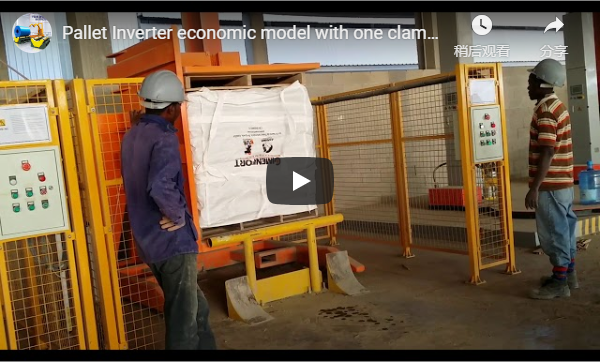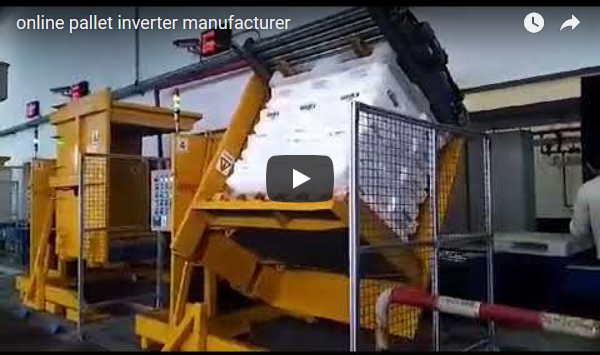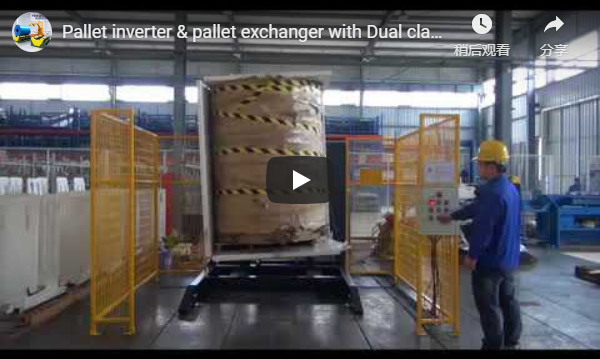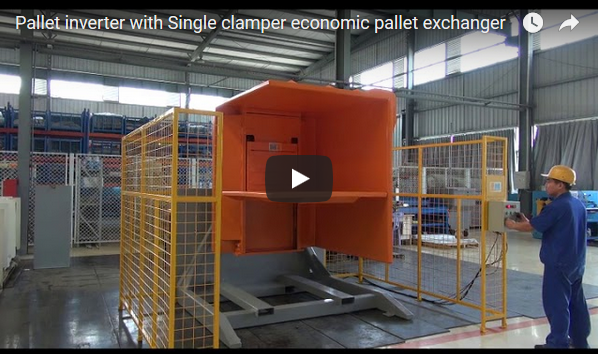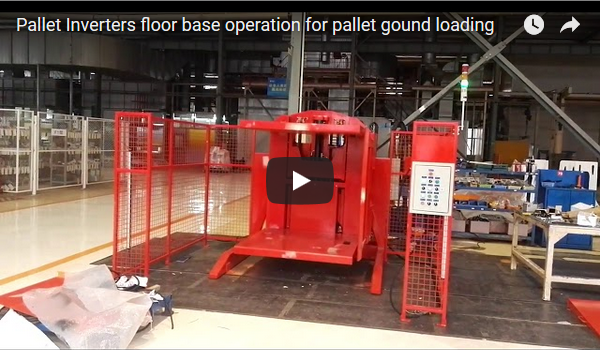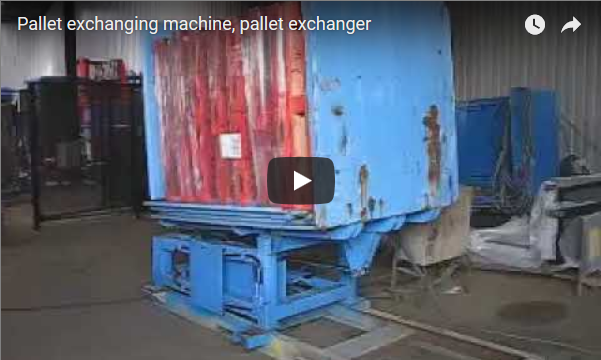Mastering Heavy Load Rotation: A Technical Look at the 180-Degree Pallet and Sheet Inverter
Handling large, heavy, or unwieldy sheets and panels—be it metal, wood, glass, or composite materials—presents significant challenges in manufacturing and fabrication environments. Manual rotation is often impractical, unsafe, and inefficient. The 180-degree pallet and sheet inverter emerges as a critical piece of automated equipment designed specifically to address these challenges, enhancing both safety and productivity through controlled, precise rotation.
1. The Challenge: Inefficient and Risky Manual Handling
Traditional methods of flipping or repositioning large sheets often involve multiple personnel, overhead cranes with specialized rigging, or cumbersome manual maneuvers. These methods carry inherent risks:
- Worker Safety: High potential for strains, crush injuries, and other accidents.
- Product Damage: Sheets can be easily scratched, dented, or warped during manual handling.
- Operational Bottlenecks: Manual processes are slow and can significantly hinder production flow.
- Inconsistency: Manual flipping lacks the repeatability required for automated lines or precise quality checks.
2. Introducing the 180-Degree Pallet and Sheet Inverter
This specialized machine provides a robust and automated solution for inverting stacks of sheets, individual panels, or entire palletized loads by a full 180 degrees. Its core function is to securely clamp the load, rotate it smoothly, and release it in the inverted position, often integrating seamlessly with production lines via automated conveyor systems. Applications span across various industries, including:
- Metal fabrication (flipping steel sheets for processing or inspection)
- Woodworking (handling large panels for finishing)
- Printing (turning stacks of paper or board)
- Glass manufacturing
- Building material production
3. Design and Structural Integrity: Built for Industrial Demands
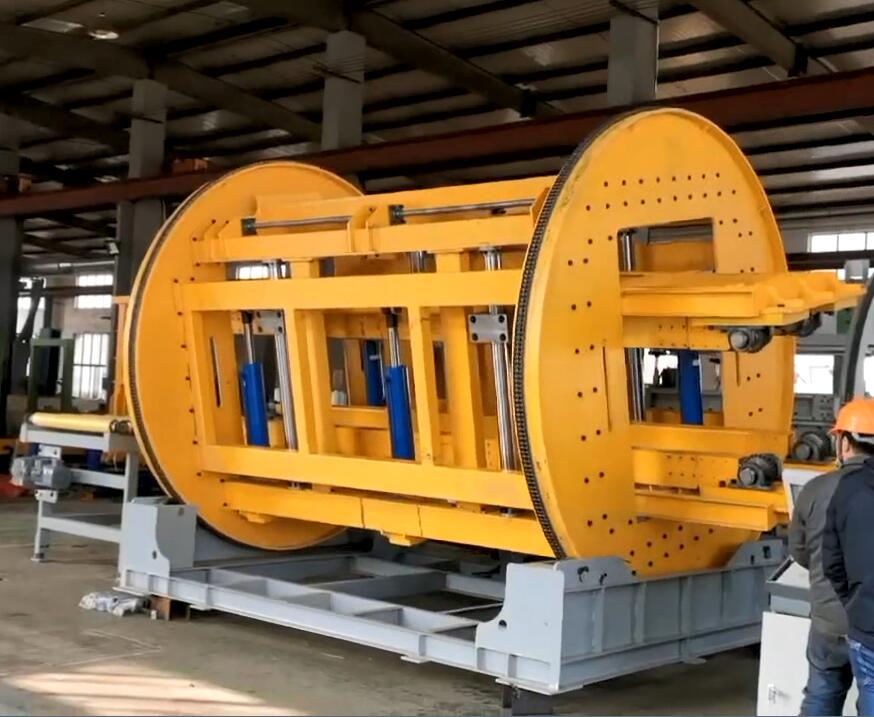
A reliable sheet inverter is characterized by its robust design and construction, engineered to handle substantial loads repeatedly and safely. Key design aspects include:
- Heavy-Duty Frame: Typically fabricated from high-strength structural steel (e.g., Q235 or equivalent), welded and reinforced to withstand the dynamic forces during rotation and clamping. The structural design prioritizes rigidity to prevent flexing under load.
- Rotation Mechanism: Often utilizes a powerful electro-mechanical gear drive system or a hydraulic system.
- Electro-mechanical: Offers precise control over speed and position, often using variable frequency drives (VFDs) for smooth acceleration and deceleration. Lower maintenance than hydraulics.
- Hydraulic: Provides high torque for extremely heavy loads, but requires hydraulic power units and regular maintenance.
- Clamping System: Essential for securing the load. Usually consists of one or two moving platforms driven by hydraulic cylinders or electric actuators.
- Adjustable Pressure: Allows setting appropriate clamping force based on the load's weight and sensitivity.
- Protective Surfaces: Clamping faces are often lined with durable polyurethane or rubber padding to prevent damage to the sheet surfaces.
- Integrated Conveyor System: Roller or chain conveyors on the loading platforms facilitate automatic feeding and discharge, enabling integration into fully automated production lines. Sensors detect load presence and position for synchronized operation.
4. Key Components and Technical Specifications Comparison
Understanding the technical specifications is crucial for selecting the right inverter for a specific application. Here's a typical range and comparison points:
| Feature | Typical Specification Range | Considerations |
|---|---|---|
| Load Capacity | 1,000 kg - 10,000 kg+ (2,200 - 22,000 lbs+) | Must exceed maximum anticipated load weight. |
| Max Load Dimensions | L: 1-6m, W: 1-3m, H: 0.5-2.5m | Defines the workable size envelope. Custom sizes common. |
| Rotation Angle | 180 degrees (fixed) | Bi-directional rotation is standard. |
| Rotation Speed | 30 - 90 seconds per 180° cycle | Balances throughput needs with smooth, safe motion. |
| Clamping Mechanism | Hydraulic / Electro-mechanical | Hydraulics for higher force, electric for cleaner operation. |
| Clamping Pressure | Adjustable (e.g., 5-15 MPa) | Needs to be sufficient to hold but not damage load. |
| Control System | PLC (e.g., Siemens, Allen-Bradley) | Allows automation, sequencing, safety interlocks. |
| User Interface | HMI Touchscreen / Push Buttons | For operation, diagnostics, parameter setting. |
| Power Requirements | 380V/480V, 3-Phase, 5-25 kW | Depends on size, capacity, and drive type. |
| Safety Features | E-Stops, Safety Fencing (optional), Light Curtains (optional), Overload Protection, Limit Switches | Crucial for operator safety and machine protection. |
Note: These are representative values. Specific models will vary.
5. Streamlined Operational Workflow and Automation
The typical automated operational cycle of a 180-degree sheet inverter with conveyors is as follows:
- Infeed: The palletized load or stack of sheets arrives on the input conveyor and moves onto the inverter's loading platform. Sensors confirm correct positioning.
- Clamping: The PLC signals the clamping system to engage, securing the load between the platforms with pre-set pressure.
- Rotation: Once the load is secure, the rotation mechanism engages, smoothly turning the entire assembly 180 degrees. VFDs ensure controlled acceleration and deceleration.
- Unclamping: After rotation is complete, the clamps retract.
- Outfeed: The inverted load is transferred from the inverter platform onto the output conveyor, ready for the next process step.
This entire sequence is managed by the PLC, ensuring synchronization with upstream and downstream equipment, minimizing manual intervention, and maximizing throughput.
6. Tangible Benefits for the Modern Fabricator: A User's Perspective
Investing in a 180-degree pallet and sheet inverter translates directly into operational improvements:
- Enhanced Safety: Dramatically reduces the risks associated with manual lifting and flipping of heavy, awkward loads. Complies with stricter manual handling regulations (e.g., [OSHA guidelines on material handling]).
- Increased Productivity: Automated cycles are significantly faster and more consistent than manual methods, reducing bottlenecks and increasing overall line efficiency.
- Reduced Product Damage: Secure, controlled clamping and smooth rotation minimize the risk of scratches, dents, or warping, improving yield and reducing scrap costs.
- Improved Ergonomics: Eliminates physically demanding tasks, leading to a healthier and more motivated workforce.
- Labor Optimization: Frees up personnel previously required for manual handling to focus on higher-value tasks.
- Process Integration: Seamlessly fits into automated production lines, enabling lights-out or minimally supervised operations.
7. FHOPE: Customization and Manufacturing Expertise
As highlighted, manufacturers like FHOPE specialize in providing these robust material handling solutions. A key advantage they offer is customization. Standard models may not fit every unique requirement. FHOPE works with clients to tailor machines by:
- Adjusting load capacities and dimensions.
- Modifying rotation speeds.
- Integrating specific PLC brands or communication protocols.
- Designing unique clamping fixtures for non-standard loads.
- Incorporating specific conveyor types or layouts.
This collaborative approach ensures the final pallet and sheet inverter for 180-degree rotating machine aligns perfectly with the customer's operational needs and facility constraints.
8. Key Considerations Before Implementation
Before integrating a sheet inverter, fabricators should evaluate:
- Floor Space: These machines require a significant footprint, including safety zones.
- Foundation: Heavy units may need reinforced concrete flooring.
- Power Supply: Ensure adequate electrical service is available.
- Integration: How will the machine connect physically and digitally with existing lines?
- Operator Training: Personnel need to be trained on safe operation and basic maintenance.
Conclusion: A Strategic Investment in Efficiency and Safety
The 180-degree pallet and sheet inverter is far more than just a machine that flips things over; it's a strategic investment in operational efficiency, worker safety, and product quality. By automating a challenging and often hazardous process, fabricators can streamline workflows, reduce costs associated with damage and injury, and position themselves for higher throughput and profitability in demanding industrial environments. Evaluating your current sheet handling processes and considering the integration of such automated technology could unlock significant operational advantages.

